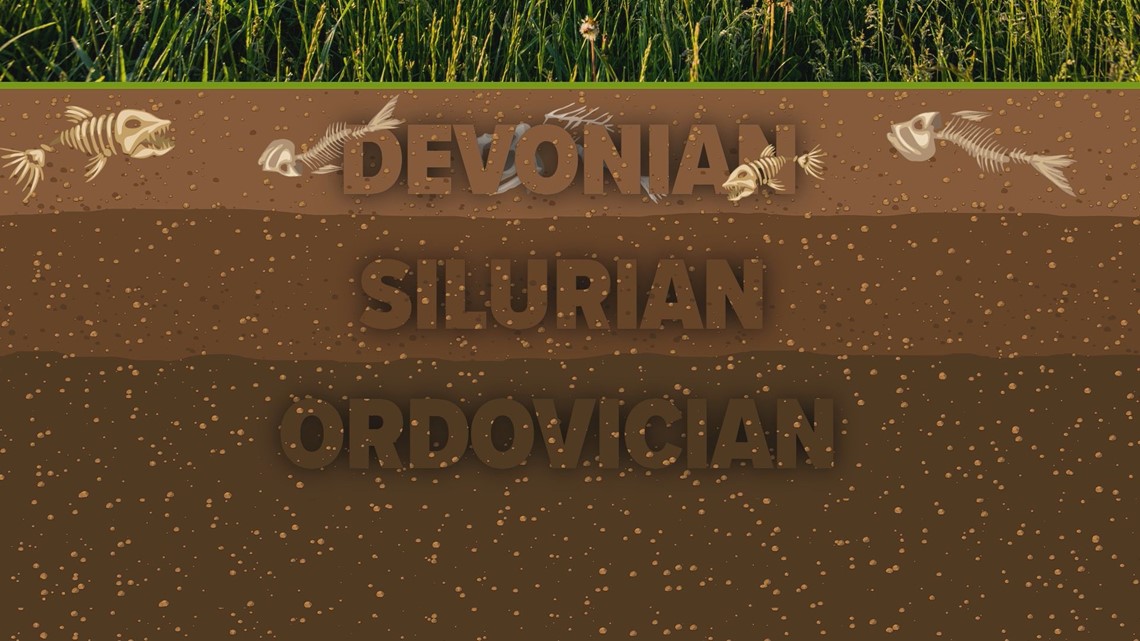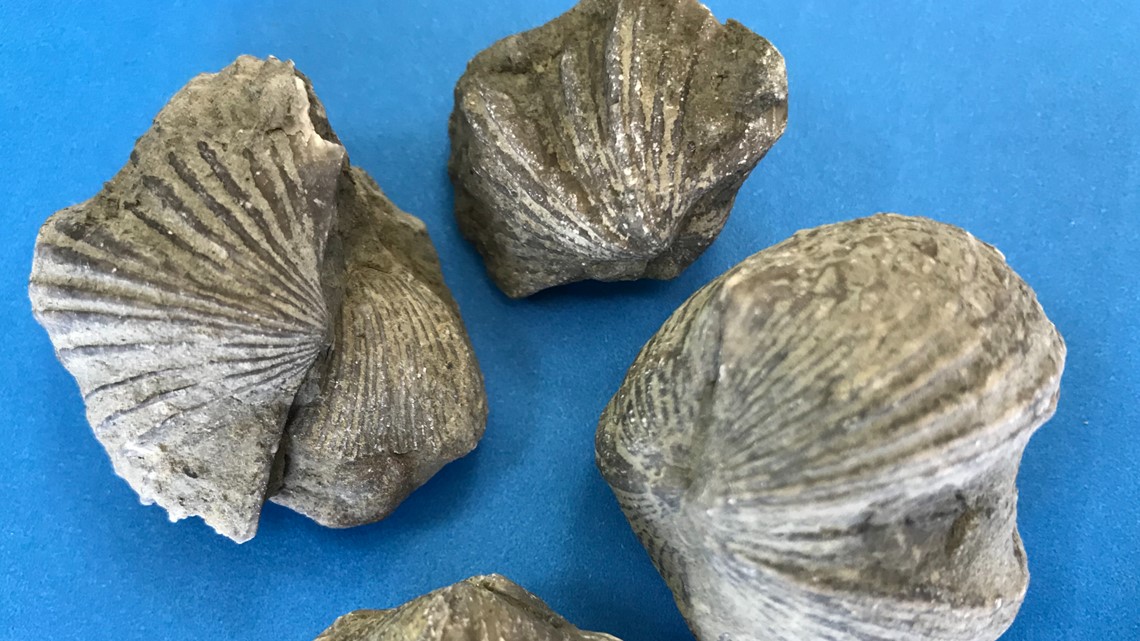LOUISVILLE, Ky. — One of the things Kentuckiana is known for is its beautiful scenery. Those scenic features – and our diverse variety of wildlife – can be attributed to the area’s geological history.
“I think that people need to have an appreciation of science because it is science that makes…life interesting. Because there’s a story behind everything,” Andrew Goldstein, an interpretive naturalist at the Falls of the Ohio State Park, said.
So, what’s our story? According to geological surveys, it’s a long one.
About 400 million years ago, the Bluegrass region was covered with water. The biggest changes to the geological layout of the area came during the Ordovician, Silurian and Devonian periods, as that water transitioned from swamps to dry land.


During the Silurian period, an uplift in the fault system that ran from Cincinnati, though Kentucky and toward Tennessee raised part of the land above sea level. This caused the younger rock levels to erode at a faster pace, exposing the older rock underneath.
That area, known as the Cincinnati Arch, created a unique pattern of rock from those three time periods. Andrew Spence, a member of the team at the Kentucky Science Center, said a visual representation of these changes can be seen at “The World Around Us” exhibit.
“The more that you’re aware of the world around us, the more you can appreciate things,” Spencer said.
The diversity of rock types throughout the Bluegrass region also influenced the biodiversity of Kentuckiana. A specific area of Silurian rock between Jefferson and Bullitt County is the sole habitat of the Kentucky Glade Cress.


“The only place in the entire world this plant can grow is right here on the border of two Kentucky counties,” Spence said.
As the world went through these geological changes, all kinds of creatures lived and died. Their skeletal remains, layered with sediment, turned to fossils – and The Falls of the Ohio in Clarksville, Indiana happens to be one of the best places to find fossils in North America.
More than 300 species of fossils have been identified at the Falls, most of which have been marine animals.
According to Andrew Goldstein, one of these fossils is the Kentucky state fossil, the brachiopod. This marine animal has two shells called valves that are bilaterally symmetrical, so the left and right sides are mirror images of each other.


The changes in climate recorded over our area’s history mean the fossils you find at The Falls likely won’t be like the plants and animals we have today.
“There’s a lot of different things you’re going to find here that are things you’d expect to see in the Bahamas, Great Barrier Reef or the Caribbean,” Goldstein said.
Beyond the fossils, you can find more than 270 species of birds, more than 100 species of fish and all kinds of different mammals and reptiles at the Falls of the Ohio. By exploring The Falls, you are also walking in the footsteps of people like Henry Clay, Abraham Lincoln and Charles Dickens – who all visited the Falls during their lifetimes.
Make it easy to keep up-to-date with more stories like this. Download the WHAS11 News app now. For Apple or Android users.
Have a news tip? Email assign@whas11.com, visit our Facebook page or Twitter feed.

